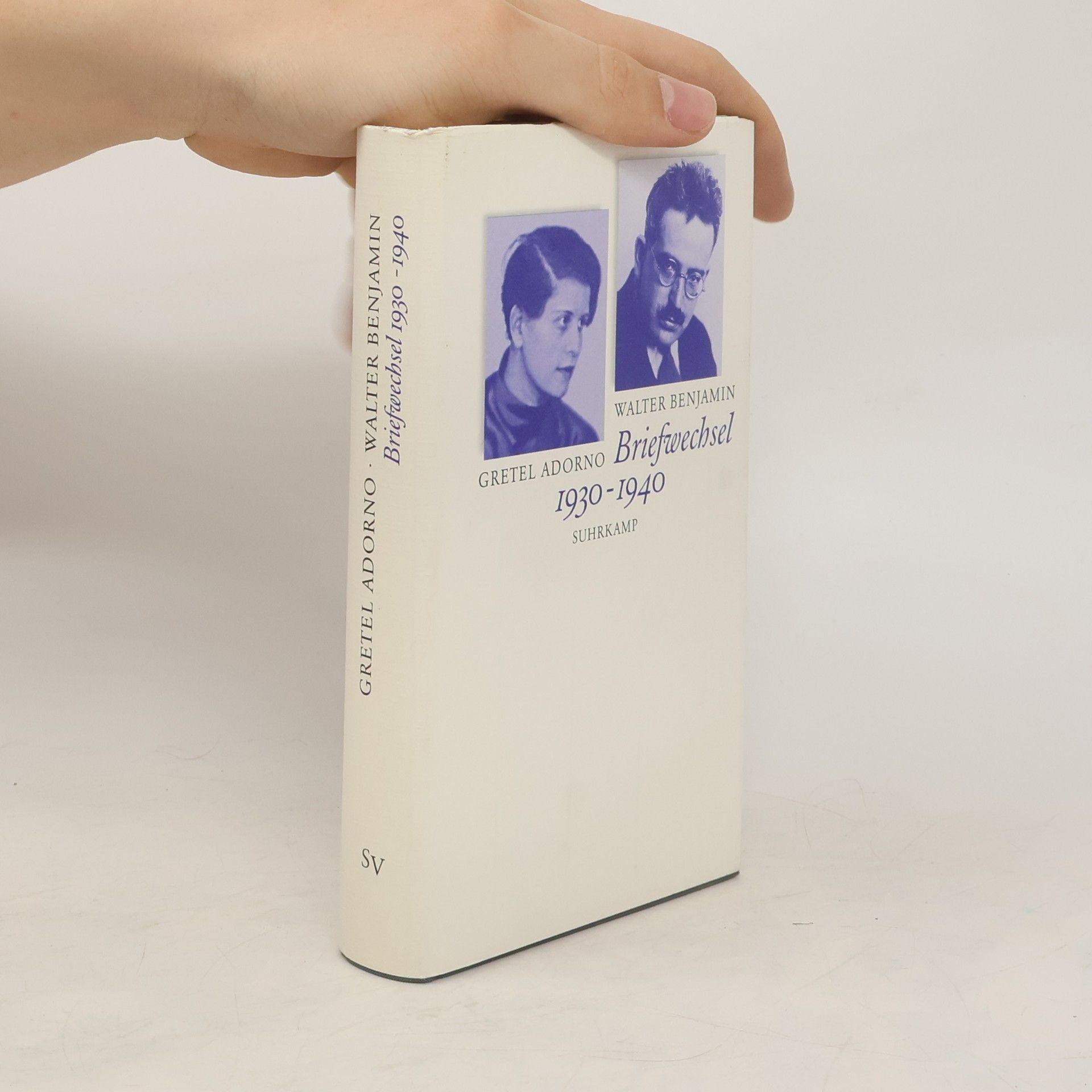We must see to it that we put the best of ourselves in our letters; for there is nothing to suggest that we shall see each other again soon. So wrote Walter Benjamin to Gretel Adorno in spring 1940 from the south of France, shortly before he took his own life. The correspondence between Gretel Adorno and Walter Benjamin, published here in its complete form for the first time, is the document of a great friendship that existed independently of Benjamin's relationship with Theodor W. Adorno. While Benjamin, alongside his everyday worries, writes especially about those projects on which he worked ..
Gretel Adorno Libri





‘We must see to it that we put the best of ourselves in our letters; for there is nothing to suggest that we shall see each other again soon.’ So wrote Walter Benjamin to Gretel Adorno in spring 1940 from the south of France, shortly before he took his own life. The correspondence between Gretel Adorno and Walter Benjamin, published here in its complete form for the first time, is the document of a great friendship that existed independently of Benjamin’s relationship with Theodor W. Adorno. While Benjamin, alongside his everyday worries, writes especially about those projects on which he worked so intensively in the last years of his life, it was Gretel Karplus-Adorno who did everything in her power to keep Benjamin in the world. She urged him to emigrate to the USA and told him about Adorno’s plans and Bloch’s movements, thus maintaining the connection between the old Berlin friends and acquaintances. She helped him through the most difficult times with regular money transfers, and organized financial support from the Saar region, which was initially still independent from the Third Reich. Once in New York, she attempted to entice Benjamin to America with her descriptions of the city and the new arrivals from Europe – though ultimately to no avail.
Die Korrespondenz zwischen Gretel Adorno und Walter Benjamin, die 1930 einsetzt, aber erst mit Benjamins Emigration nach Frankreich ihre volle Intensität erreicht, ist nicht nur ein spätes Zeugnis des intellektuellen Berlin der zwanziger Jahre, sondern auch das Dokument einer großen Freundschaft, die unabhängig von der Beziehung Benjamins zu Theodor W. Adorno bestand. Während Benjamin, neben seinen Alltagssorgen, insbesondere über jene Projekte schreibt, an denen er in den letzten Jahren seines Lebens mit Hochdruck gearbeitet hat – vor allem über den »Baudelaire« –, war es Gretel Karplus-Adorno, die mit aller Macht versuchte, Benjamin in der Welt zu halten. Sie drängte ihn zur Emigration, berichtete von Adornos Plänen und Blochs Aufenthaltsorten und hielt so die Verbindung zwischen den alten Berliner Freunden und Bekannten aufrecht. Sie half ihm durch regelmäßige Geldüberweisungen über die schlimmsten Zeiten hinweg und organisierte eine finanzielle Unterstützung aus dem anfänglich noch vom Deutschen Reich unabhängigen Saarland. In New York angekommen, versucht sie mit ihren Beschreibungen der Stadt und der Neuankömmlinge, Benjamin nach Amerika zu locken. Aber Benjamin schreibt im Frühjahr 1940: »Wir müssen sehen, unser Bestes in die Briefe zu legen; denn nichts deutet darauf hin, daß der Augenblick unseres Wiedersehens nahe ist.«
"Traducidas por primera vez al español, estas cartas entre el gran filósofo y su íntima amiga Gretel (a la sazón esposa de su compañero de la Escuela de Frankfurt, Theodor W. Adorno) contienen buena parte de la autobiografía nunca escrita por él. Con creciente tensión dramática, al modo de una novela epistolar, estas cartas reflejan una vida y un modo de trabajo intelectual en el clima de entreguerras. Un testimonio único en primera persona escrito con la inteligencia de uno de los más lúcidos pensadores del siglo XX. Las ciento ochenta cartas que componen este volumen documentan tanto una amistad excepcional, como las formulaciones y los proyectos más desafiantes de Benjamin en los años treinta. Gretel (o Felizitas, como solía llamarla) fue para Benjamin una crítica aguda y a la vez comprensiva, con la que podía compartir sus ideas pero también su cotidianidad. Fue ella quien lo ayudó a afianzar su relación con el Instituto de Investigación Social, lo mantuvo en contacto con sus amigos y conocidos de Berlín, e incluso lo apoyó económicamente en los peores tiempos. Con una serie de valiosísimas notas al pie que ayudan a decodificar la red de información y personas cercanas, esta colección ofrece, además de una lectura absolutamente deliciosa, una abundante fuente de información y una clave esencial para comprender a una de las figuras más prominentes de la cultura moderna." --Contratapa.
Correspondance
- 410pagine
- 15 ore di lettura
"Nous devons veiller à mettre le meilleur de nous-mêmes dans nos lettres car rien n'indique que le moment de nos retrouvailles soit proche", écrit Walter Benjamin dans l'avant-dernière lettre de ce volume, peu de temps avant de se donner la mort. Qu'il soit à Paris, aux Baléares, au Danemark ou en Italie, Benjamin n'a jamais cessé de correspondre entre 1930 et 1940 avec Gretel Karplus qui - quittant elle-même Berlin pour Londres puis New York - allait devenir Mme Adorno en 1937. Cette belle amitié - mais, comme le demande Gretel elle-même dans une lettre, "où passe finalement la subtile limite entre amitié et amour ?" - fait de cette correspondance où ils ont effectivement mis le meilleur d'eux-mêmes, ainsi que leurs plus grandes joies et leurs plus grandes peines, un document exceptionnel. Walter s'y livre sans masque comme à personne d'autre; Gretel fait de même avec celui qu'elle veut tout d'abord "adopter" comme un j fils (de dix ans plus vieux qu'elle) avant de le considérer comme un "grand frère". Ils s'y racontent, parlent de futilités, de survie et de bien d'autres choses plus ou moins graves.